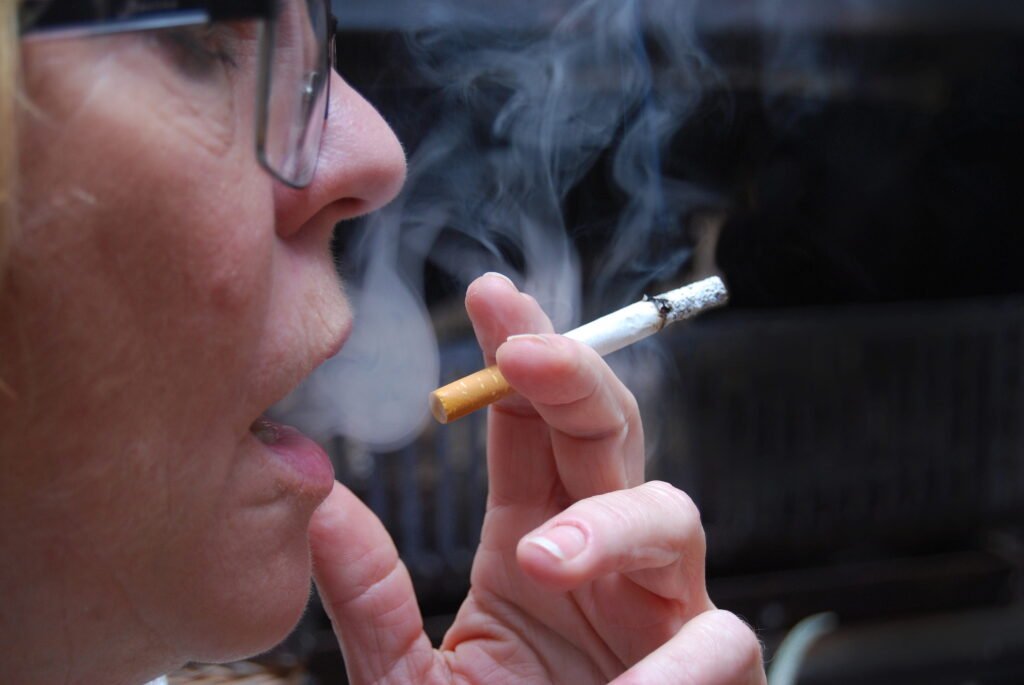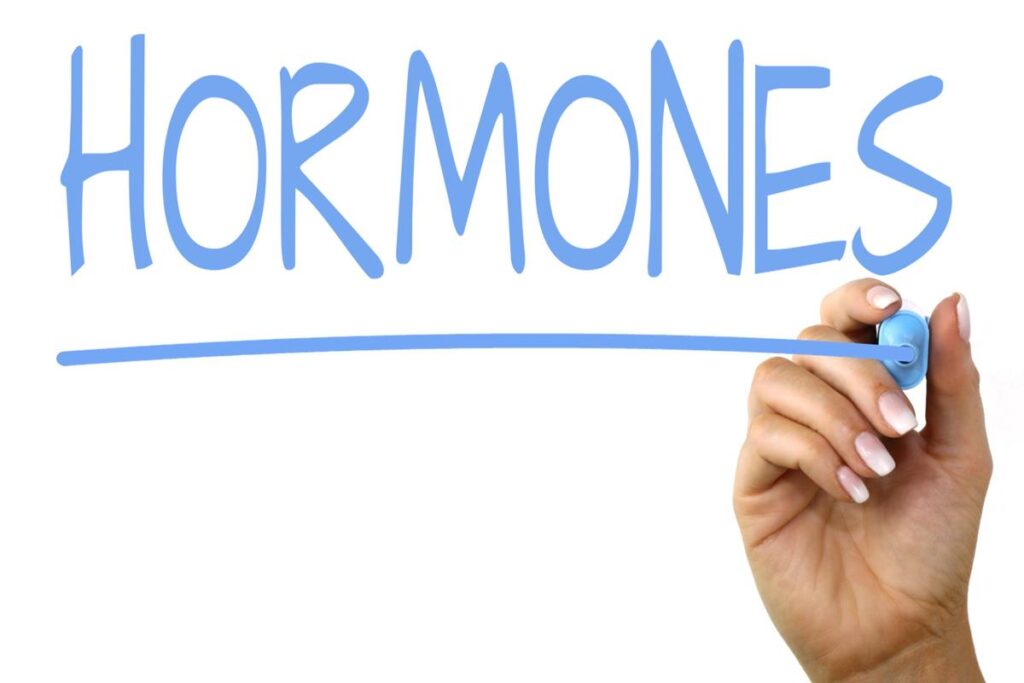Smoking and Women: An Alarming Connection
It’s no secret that smoking is hazardous to one’s health, but what many people don’t realize is that women face unique and particularly severe risks when they light up. In this blog post, we’ll delve into the dangers of smoking for women and explore the various health concerns associated with this habit.
The Silent Killer – Lung Cancer in Women
One of the most well-known consequences of inhaling smoke is lung cancer, and women who smoke are at a significantly higher risk of developing this deadly disease. In fact, female smokers are 25% more likely to develop lung cancer compared to their male counterparts. The reasons behind this gender disparity are complex, but it underscores the urgency for women to quit smoking or avoid it altogether.
Elevated Risk: Women who smoke face a significantly increased risk of developing lung cancer. In fact, lung cancer has surpassed breast cancer as the leading cause of cancer-related deaths among women.
Unique Vulnerabilities: Research suggests that women may be more susceptible to the harmful effects of smoking. They often develop lung cancer at a younger age and with fewer years of smoking than men, underscoring the urgency of addressing this issue.
Symptom Awareness: Lung cancer symptoms can be subtle and easily mistaken for other respiratory issues. Persistent cough, shortness of breath, chest pain, and unexplained weight loss are warning signs that women should be vigilant about.
Screening and Early Detection: Regular lung cancer screening, especially for those at high risk, can help detect the disease at earlier, more treatable stages. Low-dose CT scans are recommended for individuals with significant smoking histories.
Treatment Challenges: Treating lung cancer in women who smoke can be complex. Smoking can influence treatment responses and side effects, making personalized treatment plans essential.
Support and Advocacy: Women diagnosed with lung cancer should seek support from healthcare professionals and advocacy groups to navigate their diagnosis effectively. Raising awareness and funding for research is critical for advancing treatment options.
Prevention and Smoking Cessation: The most effective way for women to reduce their risk of lung cancer is to avoid inhaling smoke and to quit if they currently smoke. Quitting smoking, even after years of puffing, can have a positive impact on lung health.
Hope Through Research: Ongoing research into the causes, genetics, and treatment options for lung cancer offers hope for improved outcomes and, ultimately, finding a cure for this silent but deadly disease affecting countless women worldwide.
Recognizing the severity of the threat posed by smoking-related lung cancer in women is the first step toward prevention, early detection, and improved outcomes. Quitting cigarettes and advocating for awareness and research are crucial components of addressing this pressing health issue.
The Heartbreaking Truth – Cardiovascular Complications
Smoking doesn’t just stop at lung cancer; it also wreaks havoc on a woman’s heart. The risk of heart disease, stroke, and other cardiovascular issues is substantially higher among female smokers. Smoking damages blood vessels, reduces good cholesterol, and increases blood pressure, creating a dangerous cocktail that can lead to heart attacks and strokes.
Increased Risk of Heart Disease: Smoking is a major risk factor for heart disease, the leading cause of death worldwide. The chemicals in cigarette smoke can damage blood vessels, increase blood pressure, and elevate levels of harmful cholesterol, significantly raising the risk of heart attacks and strokes.
Accelerated Atherosclerosis: Smoking accelerates the process of atherosclerosis, the buildup of plaque in the arteries. This narrows the arteries and restricts blood flow, leading to a greater likelihood of blockages and cardiovascular events.
Impact on Blood Clotting: Smoking promotes the formation of blood clots, increasing the risk of clots that can block coronary arteries or travel to the brain, causing heart attacks or strokes, respectively.
Effects on the Heart’s Rhythm: Smoking can disrupt the heart’s normal rhythm, leading to conditions like atrial fibrillation (AFib). AFib can result in blood clots and increase the risk of stroke.
Dangers to Passive Smokers: Non-smokers exposed to secondhand smoke are also at risk of cardiovascular complications. Breathing in secondhand smoke can lead to high blood pressure and heart disease, making it crucial to create smoke-free environments to protect both smokers and non-smokers from these heartbreaking health consequences.
Understanding the heartbreaking truth about the cardiovascular complications caused by smoking is essential to motivating individuals to quit smoking and reduce their risk of heart-related diseases. Quitting puffing is one of the most impactful steps toward protecting heart health and preventing these devastating outcomes.
Fertility Fading Away – Smoking and Reproductive Health
Smoking has a significant and detrimental impact on reproductive health, particularly in women. Here are several key points to understand how smoking can lead to fertility issues:
Reduced Egg Quality: Smoking can diminish the quality of a woman’s eggs, making them less viable for fertilization. This can result in a longer time to conceive and a higher risk of infertility.
Delayed Pregnancy: Female smokers are more likely to experience delayed pregnancy compared to non-smokers. They may require a longer period to conceive, especially if they have been puffing for an extended duration.
Increased Risk of Miscarriage: Smoking increases the risk of miscarriage, which can be emotionally and physically challenging for women trying to conceive. The toxins in cigarette smoke can harm the developing fetus.
Ectopic Pregnancy: Smoking raises the risk of ectopic pregnancy, a dangerous condition where the fertilized egg implants outside the uterus, typically in the fallopian tubes. Ectopic pregnancies can be life-threatening.
Menstrual Irregularities: Female smokers may experience irregular menstrual cycles, making it more challenging to predict ovulation and fertile periods, which are crucial for conception.
Hormonal Imbalances: Smoking can disrupt hormonal balance in women, affecting the delicate interplay of hormones necessary for fertility and a healthy pregnancy.
Decreased Sperm Quality: Smoking can also impact male fertility by reducing sperm count, motility, and quality. This can make conception more difficult and increase the risk of infertility.
Pregnancy Complications: Women who continue to smoke during pregnancy are at higher risk of complications, including preterm birth, low birth weight, and developmental problems in their offspring.
Understanding the adverse impact of smoking on reproductive health underscores the importance of quitting it, not only for personal well-being but also for those planning to start or expand their families. Quitting smoking is a crucial step toward improving fertility and the chances of a healthy pregnancy.
Premature Aging – Smoking and Skin Health
Smoking is a well-established contributor to premature aging, with profound effects on skin health. Here are a few key points to understand how smoking accelerates the aging process and negatively impacts the skin:
Wrinkles and Fine Lines: Smoking is associated with the development of wrinkles, fine lines, and premature aging of the skin. This is primarily due to the harmful chemicals in cigarette smoke that reduce collagen production, leading to a loss of skin elasticity and firmness.
Skin Discoloration: Smokers often experience uneven skin tone and discoloration, characterized by a yellowish or grayish complexion. Nicotine and other toxins in cigarettes can constrict blood vessels, reducing blood flow to the skin and impairing its natural color and vibrancy.
Dull and Dry Skin: Smoking can dehydrate the skin, making it appear dull and dry. Dry skin is more prone to irritation, redness, and flakiness, further exacerbating the appearance of aging.
Delayed Wound Healing: Smoking hinders the body’s ability to repair and heal damaged skin. This can lead to slower recovery from wounds, cuts, and even acne breakouts, leaving behind scars and blemishes.
Increased Risk of Skin Cancer: Puffing smoke has been linked to an increased risk of skin cancer, including squamous cell carcinoma. The carcinogens in tobacco smoke can damage skin cells and increase susceptibility to skin cancers.
Baggy Eyes and Dark Circles: Smoking can contribute to the development of baggy eyes and dark circles under the eyes. The reduced blood flow and collagen breakdown caused by inhaling can make these issues more pronounced.
Accelerated Aging: Smokers often appear older than their non-smoking counterparts of the same age due to the cumulative effects of smoking on the skin. The damage is not limited to facial skin; it affects the entire body.
Poor Skin Healing: Surgical procedures, such as plastic surgery or cosmetic treatments, tend to have less successful outcomes in smokers due to impaired skin healing. Smoking cessation is often recommended before such procedures to improve results.
Sun Protection is Vital: Given the skin’s increased vulnerability, it is essential for smokers to prioritize sun protection. Sunscreen and protective clothing can help reduce further skin damage and lower the risk of skin cancer.
The Risk Multiplier – Smoking and Hormonal Health
Smoking has a profound impact on hormonal health in both men and women. It can act as a risk multiplier, exacerbating the effects of hormonal imbalances and increasing the likelihood of various health issues. Here are a few key points to understand about the relationship between smoking and hormonal health:
Estrogen Disruption: Smoking can disrupt the normal balance of estrogen, a key hormone in both men and women. In women, this disruption can lead to irregular menstrual cycles and increased risk of conditions like polycystic ovary syndrome (PCOS).
Fertility Challenges: Smoking is associated with reduced fertility in both men and women. In women, it can lead to difficulties conceiving, while in men, it can lower sperm count and motility.
Menopausal Complications: Women who smoke may experience more severe menopausal symptoms, such as hot flashes and mood swings. Smoking can also contribute to earlier onset of menopause.
Hormone-Related Cancers: Smoking is a known risk factor for hormone-related cancers such as breast cancer in women and prostate cancer in men. The interaction between smoking and hormonal imbalances can increase cancer risks.
Bone Health: Inhaling smoke can accelerate bone loss, especially in women. It can lead to osteoporosis, a condition characterized by weakened bones and an increased risk of fractures.
Thyroid Function: Smoking may disrupt thyroid hormone function, potentially leading to thyroid disorders. “Thyroid hormones play an indispensable role in controlling metabolism and upholding overall well-being.”
Endocrine System Effects: Puffing cigarette can impact the entire endocrine system, affecting hormone production and regulation throughout the body. “This disruption can result in various health issues.”
Hormonal Birth Control: Smoking while using hormonal birth control methods, such as birth control pills, can increase the risk of cardiovascular complications, especially in women over 35.
Pregnancy Complications: Smoking during pregnancy can lead to hormonal imbalances in both the mother and the developing fetus, resulting in various complications, including preterm birth and low birth weight.
Lifestyle Changes Matter: Quitting smoking is crucial for restoring hormonal balance and reducing associated health risks. It can lead to significant improvements in hormonal health over time.
Understanding the intricate relationship between smoking and hormonal health underscores the urgency of quitting smoking for both men and women. It is a critical step toward reducing the risks of hormonal imbalances and the associated health problems that can arise.
Breaking Free – Quitting Smoking for a Healthier Future
While the dangers of smoking for women are grim, the good news is that it’s never too late to quit. The moment you quit, your body initiates its process of self-repair. Your risk of developing related diseases decreases, and over time, your health can improve significantly.
When you decide to quit smoking, your body embarks on a remarkable journey towards self-healing. The moment you stub out that last cigarette, a cascade of positive changes begins to take place within your body. Here’s what happens as your body starts the process of repair and recovery:
- Improved Blood Circulation: Within 20 minutes of quitting, your heart rate and blood pressure start to drop, allowing your blood vessels to widen. This enhanced circulation means more oxygen is delivered to your cells, improving overall health.
- Reduced Carbon Monoxide Levels: In just a few hours, the carbon monoxide levels in your blood begin to decrease. This is significant because carbon monoxide is a poisonous gas found in cigarette smoke that can interfere with your body’s ability to transport oxygen.
- Nicotine Elimination: Nicotine, the addictive substance in cigarettes, starts to leave your body within the first few days. As it clears from your system, your cravings begin to diminish.
- Improved Lung Function: Over time, your lung function begins to improve. Cilia, tiny hair-like structures in your airways that help to clear mucus and debris, start to regain normal function. This means your ability to breathe and cough out pollutants improves, reducing the risk of infections.
- Reduced Risk of Cardiovascular Disease: Within a year of quitting, your risk of heart disease drops significantly. The risk continues to decrease over time, aligning more closely with that of a non-smoker.
- Lowered Cancer Risk: Your risk of developing various types of cancer, such as lung, mouth, and throat cancer, starts to decline. The longer you stay smoke-free, the greater the reduction in cancer risk.
- Enhanced Senses of Taste and Smell: Many people notice an improvement in their sense of taste and smell within weeks of quitting it. Food can become more enjoyable, and you may find yourself appreciating scents you had long forgotten.
- Better Skin Health: Smoking can accelerate the aging of your skin, leading to premature wrinkles and a dull complexion. After quitting, your skin may begin to look healthier and more vibrant.
- Improved Oral Health: Quitting nicotine smoke reduces the risk of gum disease, tooth loss, and bad breath. Your oral health starts to recover, and your teeth become less stained.
- Emotional Well-being: Breaking free from nicotine addiction can have positive effects on your mental health. Many people report reduced stress and anxiety levels, improved mood, and increased self-esteem after quitting.
Conclusion – Empowering Women to Choose Health
In conclusion, the dangers of smoking for women cannot be underestimated. From lung cancer to heart disease, fertility issues to premature aging, puffing cigarette poses a grave threat to women’s health. However, by making the courageous choice to quit, women can take control of their health and enjoy a brighter, smoke-free future. It’s time to prioritize health, break free from the chains of cigarette, cigars and empower women to make choices that promote a long, fulfilling life.
Frequently Asked Questions About Smoking
Quest 1: How bad is smoking for women?
Ans: Smoking is exceptionally harmful to women, as it significantly increases their risk of numerous health issues. It is a leading cause of lung cancer, heart disease, and stroke among women. Additionally, inhaling smoke during pregnancy can result in serious complications such as preterm birth, low birth weight, and developmental problems for the baby.
Women who smoke also face a higher risk of cervical and breast cancer. Moreover, it can accelerate the aging process, leading to premature wrinkles and skin damage. Overall, cigarette smoke poses a grave threat to women’s health and well-being, making quitting one of the most important steps they can take for their long-term health.
Quest 2: What smokers should eat to stay healthy?
Quest 4: Does smoking affect fertility in women?
Quest 5: Does smoking affect periods?









1 thought on “Women at Risk – The Battle Against Smoking in 2025”